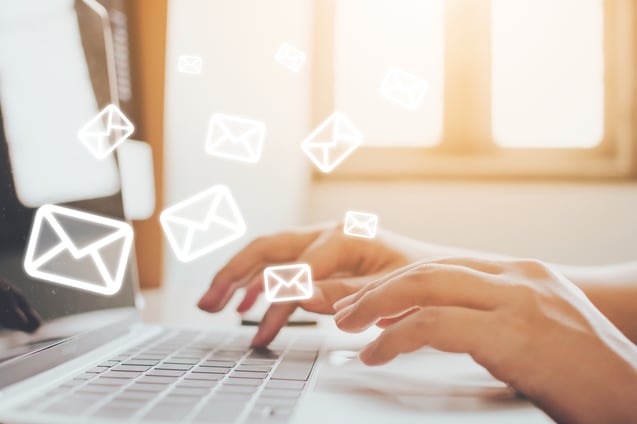
Sometimes, even savvy people write off email. They may assume that it's no longer as successful as they might hope. Do people use email as much as they use their other platforms? Can a marketer achieve value through email?
The truth is, email marketing is still a highly effective form of advertising. The median ROI of email marketing hovers around 122%: higher than many other channels. Savvy marketers can see an even higher return on their investment. The secret is ensuring that you follow these tips to manage your direct-to-you email marketing campaigns and make the most of your emails.

1. Decide on Your Campaign Subject
Before you start creating your email campaign, you need to know what you're going to be promoting. Is it a product? The opening of a new location? Are you putting together a general branding campaign to help consumers get a better idea of precisely what your business has to offer and what sets your brand apart? You don't just want to throw together a random series of emails. Instead, you want to put together a highly cohesive email series that fits together and serves your needs.
2. Segment Your Audience List
Knowing what your campaign is trying to accomplish can change who your emails should be and how you want to target them. Not everyone on your email lists needs to see every campaign. For example, if you're promoting a product that best fits a specific segment of your email marketing list, you might want to send it out to them directly rather than sending out an email blast that covers your entire email list.
Likewise, the customer's status with your company might determine how much they need to see. For example, an existing customer might not need to see the campaign sequence for someone who has just subscribed. Break your email list up into parts so that you can easily send those emails out to precisely the customers that will benefit from them.
3. Choose an Email Sequence
An email sequence sends out a set of emails based on a specific action. You might want to trigger an email sequence when a customer first signs up for your emails, or you might want to trigger a cart abandonment email. Determine what will trigger that sequence and what you want to include. For example, if someone registers for a webinar, you might send them a five email sequence over the next two weeks:
- Email 1: A thank you for registering, complete with a calendar invite and a link to attend
- Email 2: An educational/introductory email that shows the resources you have to offer that relates to the webinar
- Email 3: A reminder several days before the webinar, with a calendar invitation and the link to attend in case your customers lost or missed the first email
- Email 4: An email the day of the webinar to serve as a reminder
- Email 5: A thank you email the day after the webinar that offers a link to the recording or a mention of the next step you want them to take
You might also have similar email sequences based on other triggers.
4. Prepare an Offer or CTA
In every email you send, you want to provide value to the recipient. You want your subscribers to continue to open your emails, not just ignore them whenever they appear in their inbox. To feel like the email has added something to their lives, they need to get value from your content. A few examples are a discount code, a free offer or download, a free consultation or estimate, or some other offer that will encourage them to take advantage of the request now, then check back with your next email.
5. Create the In-Email Content
Once you've decided on all of the above, prepare the content. Use graphics, animation, and videos to entice the reader and break up the text content. You may want to include links to your website and social media pages and let your readers know how to connect with you. Encourage them to click to view additional information from your website or social media.
6. Pick Enticing Subject Lines
A great subject line can be the difference between an opened email and one that your subscribers ignore entirely. Each subject line should be intriguing. Choose words related to the content and the brand that would entice the consumer to open them. Ensure that you use capital letters when appropriate: many of your subscribers will prefer grammatically correct content. You may also want to consider using emojis to catch the eye and stand out in a busy inbox. An average of 47% of email recipients will open an email based on the subject line alone, making it one of the most essential parts of your email.

7. Schedule Your Email Campaign
When are the best days and times for your emails to go out? Does that change based on what you're offering? How often should you send them? Carefully consider these key factors as you put together your email campaign, then schedule them all in advance so that it's fully automated and you don't have to think about it later.
Do you want to achieve a knockout email campaign that will stand a cut above the rest? Take a look at these strategies and consider how you can incorporate them into your next email campaign for max effectiveness.





